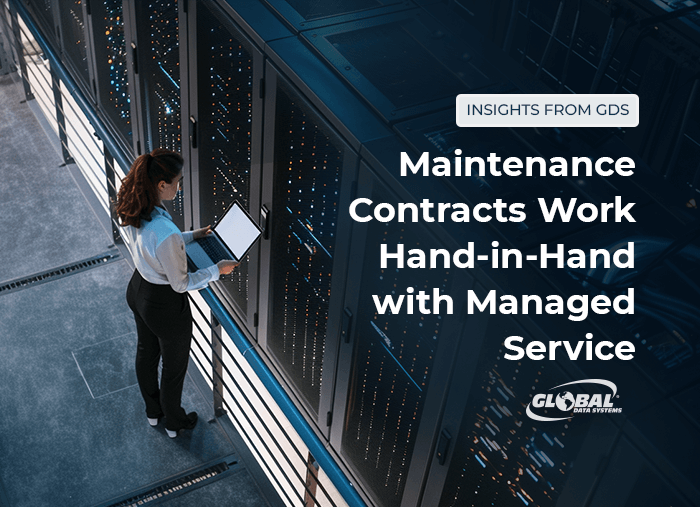Maintenance Contracts Work Hand-in-Hand with Managed Service
Technology breaks. Today’s hardware and software are extremely reliable, but something will inevitably become unstable or just stop working. To minimize the impact of such failures, it’s important to have contingency plans for the repair or replacement of your IT systems.

Managed services providers (MSPs) play a critical role in the health of your IT investments by monitoring and managing systems to detect and resolve problems. In many cases, your MSP will be able to remedy issues before you’re even aware of them, effectively preventing business-crippling downtime.
An MSP agreement won’t cover hardware or software failures, however. That’s why it’s important to have comprehensive warranties and service agreements in place. Maintenance contracts work hand-in-hand with managed services to minimize downtime and maximize the ROI of your IT equipment.
The Value of OEM Maintenance Contracts
A maintenance contract with the original equipment manufacturer (OEM) will typically include a service level agreement (SLA) for the delivery of replacement equipment. Depending on the criticality of the system and what you’re willing to pay, the SLA could provide next-day, same-day or even two- or four-hour response times. If you tried to obtain the equipment through regular sales channels, it could take days or even weeks.
The hardware and software components you obtain through your OEM maintenance contract will be built and tested according to the manufacturer’s specifications and standards. They will be guaranteed to be compatible with your equipment and perform according to factory specs.
With an OEM contract, you gain access to factory-trained technicians with specific expertise in the device or application involved. Depending upon the agreement, these technicians may come onsite to perform the repair or replacement, or work with your MSP to complete the work. Most OEM maintenance contracts give you and your MSP access to a knowledgebase of troubleshooting tips. They may also provide 24x7 phone support. You and your MSP will be notified of known issues and provided with security patches, bug fixes and firmware updates.
OEM maintenance contracts offer benefits like SLAs for replacement equipment, factory-tested components, access to expert technicians, and timely updates.
When to Go with a Third-Party Contract
OEM maintenance contracts are often three-year arrangements with options for different levels of coverage. When the initial warranty period has expired, OEM support costs can escalate quickly. This creates an incentive for you to replace the hardware or app involved. Your MSP can help you analyze the trade-offs between upgrading and paying for extended maintenance.
In some cases, a contract with a third-party maintenance provider can be a good choice and may cut costs by as much as 60 percent. There are downsides to third-party support, however. Technicians tend to have more generalized knowledge since they must support equipment from multiple manufacturers. They may rely more on aftermarket parts, with longer wait times for delivery — which could increase downtime.
Given these uncertainties, most experts recommend utilizing third-party service contracts for non-essential components or older gear that is no longer supported by the manufacturer. For critical applications and servers that run the businesses, stick with an OEM contract and keep your equipment up to date.
Ensure Continuity with Comprehensive Maintenance Contracts
The IT infrastructure in most organizations involves a complex interplay of hardware and software from multiple manufacturers. While your MSP delivers day-to-day frontline support, it’s important to maintain IT warranties, service contracts and support agreements covering critical equipment and applications.
GDS requires our customers to have active maintenance contracts on servers and other core components of the IT environment. Let us assess your environment and identify any gaps in coverage that could put your organization at risk. We can also help you identify any duplicative or unneeded contracts so you can free up that budget.
Benefits of Managed IT Services from Global Data Systems
- Strategic Managed IT: We help you solve your technology related business problems.
- Connectivity: We get you reliable, secure connectivity anywhere in the western hemisphere in 48 hours.
- Support: When you need help simply call our 24x7x365 support number.
- Billing: Instead of managing hundreds of vendors - get one, easy to read bill from GDS.
Contact Managed Services Provider, Global Data Systems >
